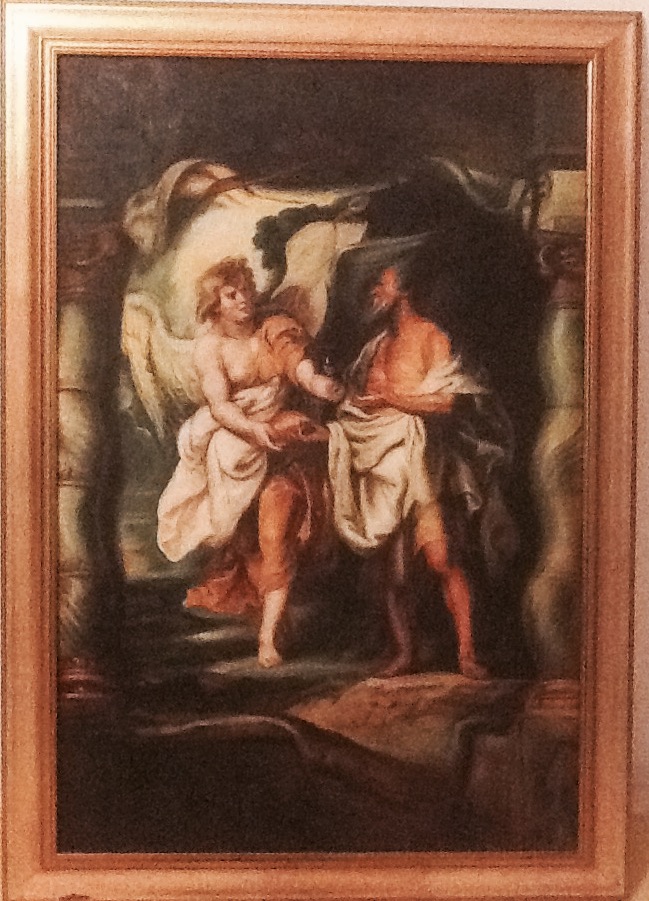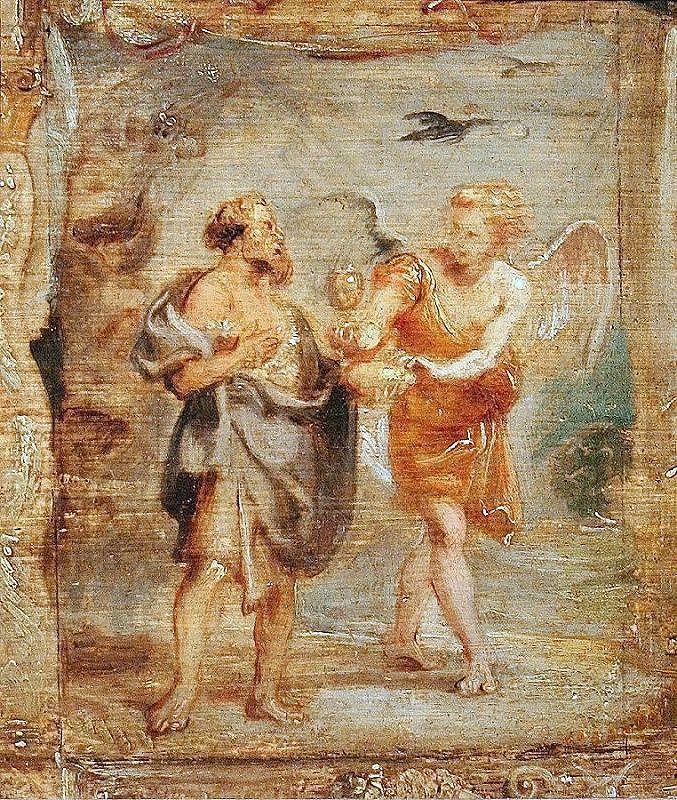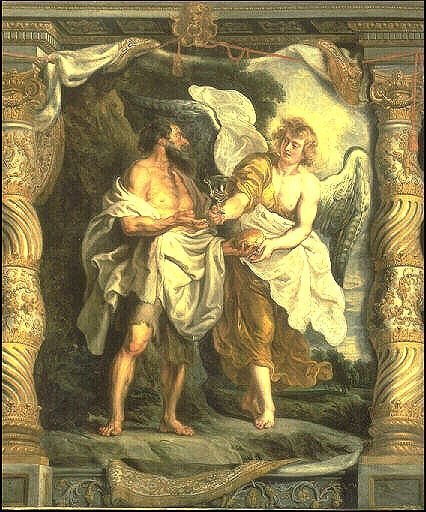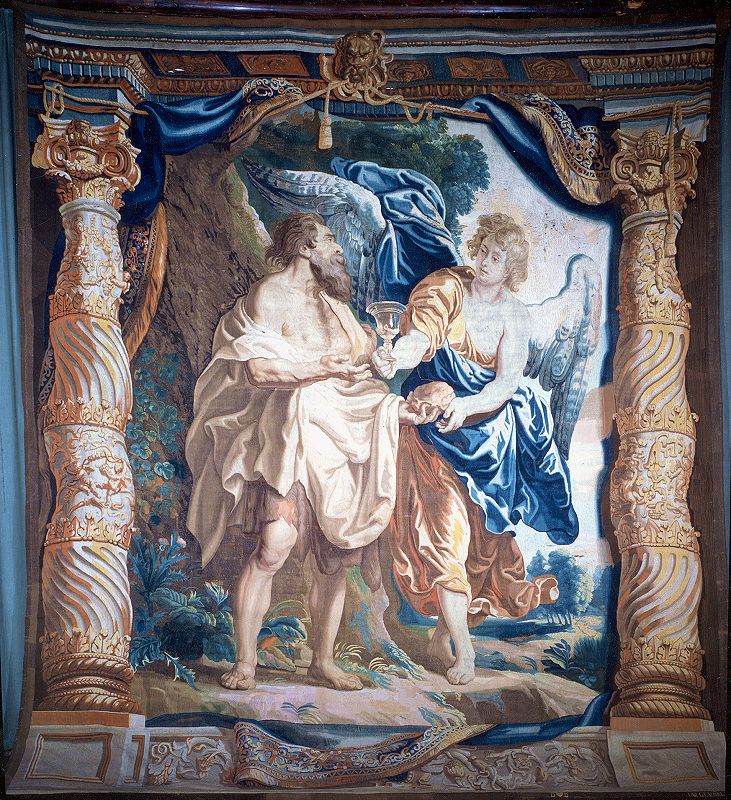


Bozzetto

Model
Both the bozzetto and the model are preserved at the Museé Bonnat, in Bayonne. The cartoon for the tapestry is preserved at Museé des Beaux Arts in Valenciennes, while the tapestry itself is at Las Descalzas Reales in Madrid. At the same time Rubens was working on a commission by the Carmelites of Antwerp to depict the same theme of The Triumph of the Eucharist for the main altar. Elijah is present in this painting with Moses and other saints, including St Cyril of Alexandria vested in the Carmelite habit, adoring the Eucharistic Risen Christ surmounting the globe. The scene of Elijah and the Angel in the desert is viewed as an Old Testament allegory of the Viaticum (Bread for the Journey). Elijah is shown here vested in a brown and a white clothing as spiritually he is venerated as the Spiritual Father of Carmelites. Rubens’ acquaintance with Carmelites (Calced and Discalced) may have influenced his choice of including the Biblical account of 1Kings, in the Triumph of the Eucharist commission.

Tapestry cartoon

Tapestry
Later on in 1635 the Jesuit Jean Bolland moved to Antwerp and started to work on the publication of the Acta Sanctorum (Lives of Saints). In 1675 the Bollandists challenged the Carmelite claim of being the Sons of the Prophet Elijah, their founder. Their view was condemned as heretic by the Spanish Inquisition and in 1715 the condemnation was taken back. In 1725 however Carmelites were allowed to place the image of Elijah in St Peter’s Basilica alongside the saintly founders of religious orders. Although, as Bollandists pointed out, there is no historical succession from Elijah to Carmelites, still he is the spiritual father and founder of Carmelites who take their inspiration from his contemplative prophetic mission. Christian ascetics always looked upon the Prophet who dwelled in the desert as their father and model.
Thanks Ms Giovanna Tabone OV, for gifting the Priory with this copy of a masterpiece historically connected with Carmelites.
Go Ahead, Leave A Comment